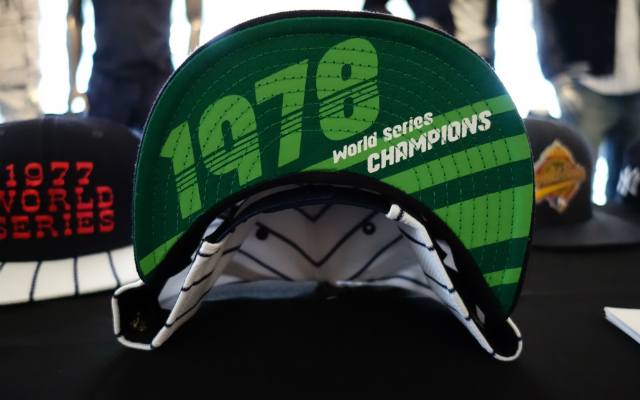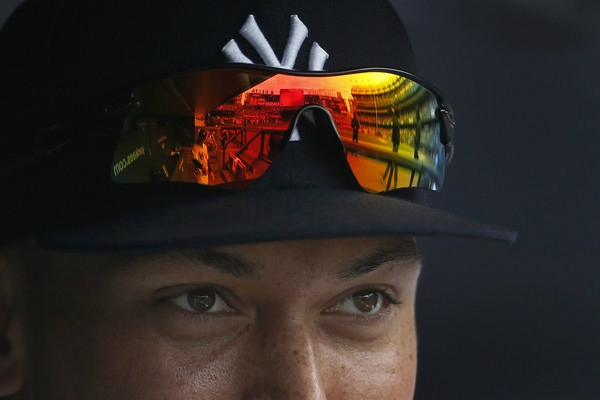
With the New York Yankees brand, the past is always present. But should the future take precedent?
Early in this season, the Yankees’ marketing near the stadium has brought the team’s historic past to the forefront. After two seasons where the souvenir cups featured current players, the new cups contain a smattering of World Series logos. Ads at the subway stops near Yankee Stadium highlight the 27 championships. Furthermore, the team has begun selling stadium-exclusive hats corresponding to each World Series win with unique details for each era.
When you think about the Yankees’ brand over the years, this makes a lot of sense. The brand has always been built upon a winning atmosphere. With a ridiculous number of championships has come an overwhelming number of fans scattered across the country but concentrated especially in New York. There is little doubt which is the No. 1 baseball team in the hearts of most New Yorkers.
And diehard fans identify with this sense of winning. They even demand it. They come to the park both due to a connection to the past and an expectation the current product will live up to the established expectations. But the diehard fans make up the 25-30 thousand spectators that will come to the park rain or shine, win or lose, championship or no.
So at least part of any marketing campaign each season needs to be focused on how to bring in the casual fan. The one who could live with themselves if they don’t make it to Yankee Stadium each year, let alone every month or game. Beyond simply going to the stadium, these are the fans that may only follow and watch the team a little, paying extra attention if the team is winning.
Does an appeal to a past filled with winning work on these casual fans? This, after all, is what the brand already is, so you’re emphasizing what you already have and not extending the brand. That isn’t a bad thing. Extending a brand further can dilute it and the accentuation on championships makes plenty of sense from a marketing perspective. However, I don’t know if this brings that extra 10-20K to the stadium. This is because I am a Yankees and baseball junkie and far from a casual fan.
The way I tried thinking about this was from the perspective of a Yankee fan considering a trip to Citi Field. I am not a Mets fan by any means, but if I’m in the city and the Mets are the only game in town, I’ll certainly consider it. I don’t think an appeal to the Mets’ past would get me to the stadium, but they don’t have the same past as the Yankees, making this an unfair comparison. A general Mets advertisement would make me consider the ride to Citi Field when I otherwise wasn’t considering it, but I would need something more to get me there.
In the recent past, that something extra has been the Mets’ pitching. I can say definitively that I went to Citi Field with the express purpose of seeing Matt Harvey in 2015. By that time, he was no longer a rookie or burgeoning star but a more established part of the team well into his third big league season.
But my trip to see Harvey made me think that maybe a marketing push around exciting young talent could work better than an appeal to nostalgia.
The Yankees don’t have the established talent of the Mets’ rotation right now or the flashy everyday veteran star of a Yoenis Cespedes. What they do have is some of the most exciting young position players who could potentially man the middle of the lineup for the next decade. For a baseball fan, that’s an exciting proposition. For a Yankee fan, even a casual one, that should be even more appealing, the chance to ostensibly get in on the ground floor of a new Yankee evolution.

So a marketing push behind, let’s say, Gary Sanchez, Aaron Judge and Greg Bird could set you up for the future. The team already utilizes their breakout potential in some YES ads and it’s not like they’re absent from the Yankees’ marketing materials. However, if you further establish the star power of those young players, it can help you down the road if they’re everything they’re made up to be. It would create a connection with fans, including the non-consistent ballpark goers, that you can play off of for years. It could potentially be the same as connecting fans with Mariano Rivera and Derek Jeter in 1996 and riding that all the way to 2014 and beyond.
But this can really backfire, too. I go back to the Harvey example. He was dreadful last year and that can create a bad taste in fan’s mouths. Or what about the ill-fated Dan & Dave Reebok commercials from before the 1992 Olympics. Relying on unestablished athletes can blow up in your face. What if the first baseman you’re advertising heavily starts the year 1 for 20? Or your catcher of the future injures his arm and is out for a month? Not many people are going to be excited about a cup or t-shirt of a player who appears to be a marginal talent.
So there are easy reasons not to go all-in on the youth movement. The risk is high despite the potential reward and the possible reality that youth talent may bring more casual fans to the park. Still, it’s not hard to imagine a near future with a slightly more than life-sized billboard of Aaron Judge dominating Time’s Square. With the dad jokes aside, the future of Yankees’ marketing seems to be on the current team, but the past may be the best present for now.
Leave a Reply
You must be logged in to post a comment.